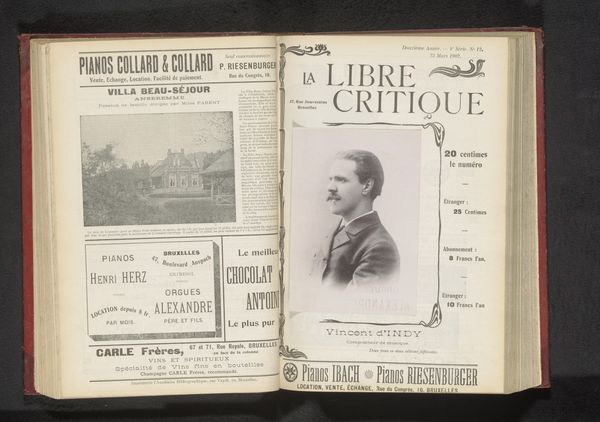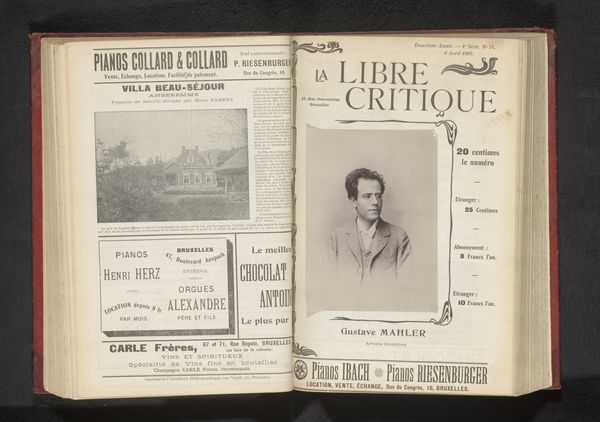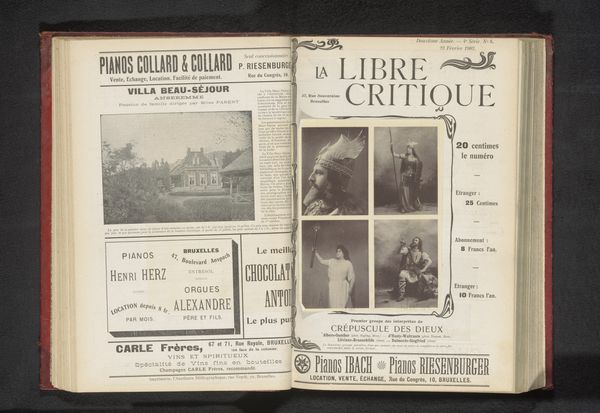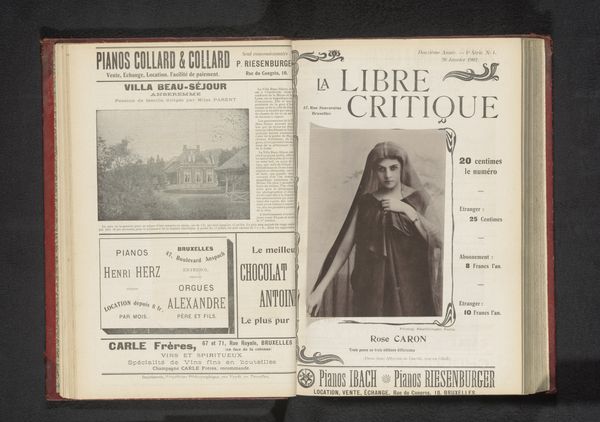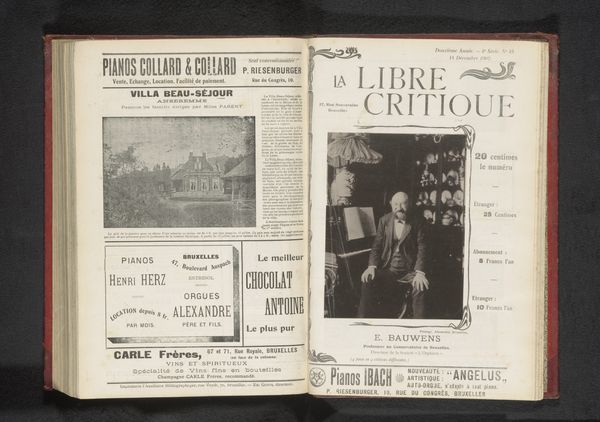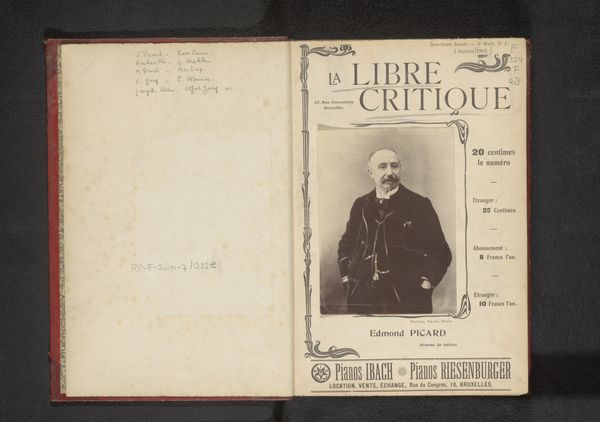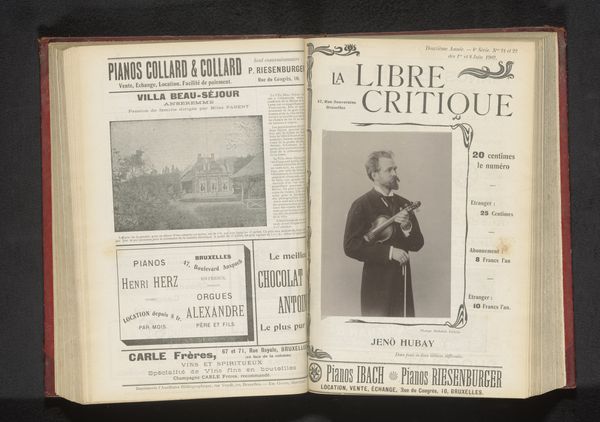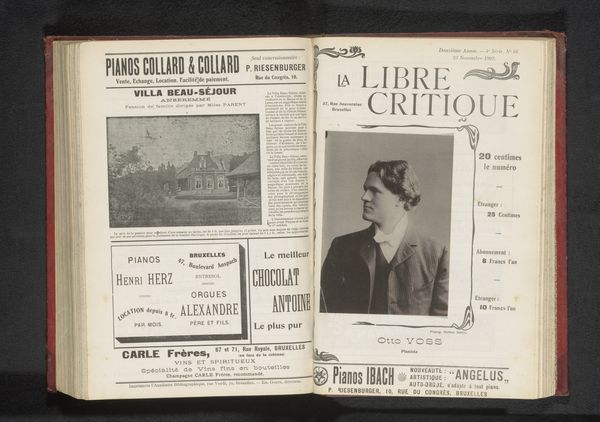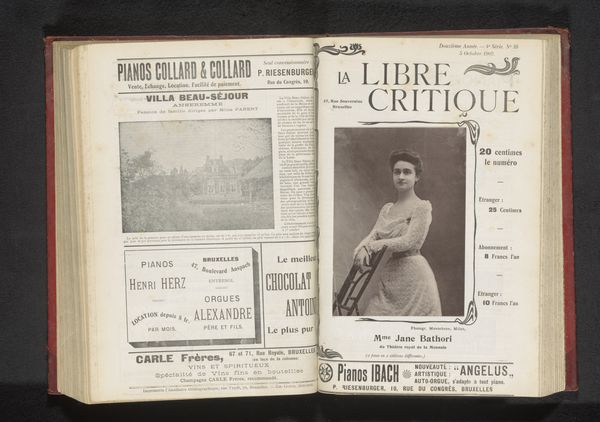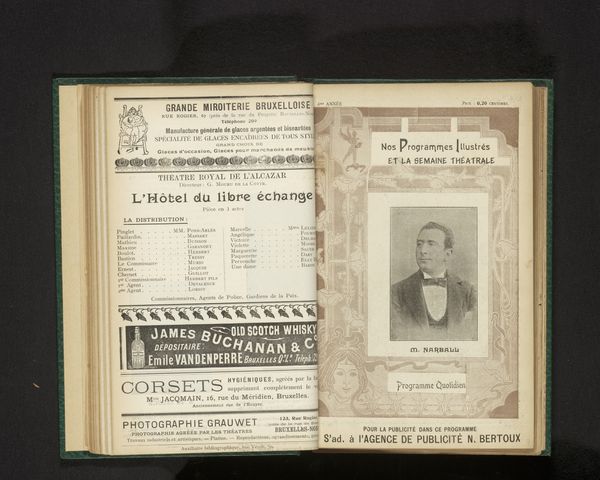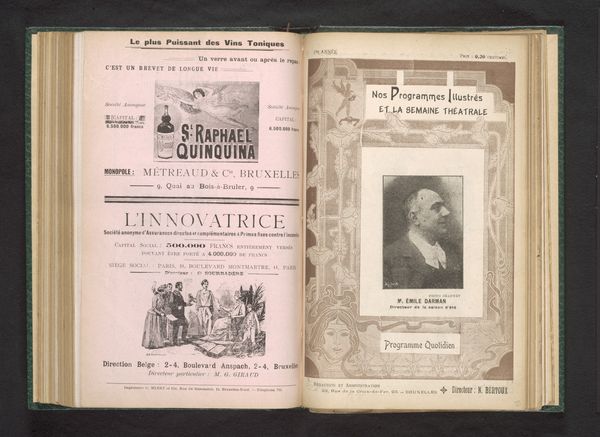
Fotoreproductie van een tekening en drie portretten van sprekers van La Libre Esthétique before 1902
0:00
0:00
print, paper, photography, collotype
#
portrait
#
art-nouveau
# print
#
paper
#
photography
#
collotype
#
early-renaissance
Dimensions: height 142 mm, width 102 mm
Copyright: Rijks Museum: Open Domain
Editor: So, this spread is a photographic reproduction from before 1902 of a drawing alongside three portraits. It’s called "Fotoreproductie van een tekening en drie portretten van sprekers van La Libre Esthétique.” What first strikes me is how modern the layout feels, almost like a contemporary magazine spread, advertising mingling with the intellectual. What do you see here? Curator: You know, it really is a peek into a specific moment, isn't it? That intersection of art, commerce, and intellectual discourse. For me, there's something deeply poignant about seeing these faces – these speakers from "La Libre Esthétique" – caught in a moment before history really got its teeth into them. Does it make you wonder what radical thoughts were brewing in their heads, poised to shake up the art world? I wonder what made them tick; were they fiery, or more cerebral in their delivery, for example? Editor: It does make you wonder, especially seeing them juxtaposed with ads for pianos and chocolate. What's with the Art Nouveau framing around the title, by the way? Curator: Ah, Art Nouveau! A visual hug, wasn’t it? It's trying to elevate the everyday, reminding us that even in newspapers and advertisements, beauty has a place. Perhaps those swirling lines are whispering that art and life are inextricably intertwined, even amidst the clamor of commerce. Do you think it works, though? Editor: I think so. The contrast is intriguing. I wouldn’t have noticed the ads as much without the artistry next to it. It pulls you in. It sort of suggests that consuming can be, in itself, an aesthetic experience, or at least an experience for refined people? Curator: Exactly! That’s the push and pull. And in a way, isn't that what all art does – lure us in with beauty, then prod us to think, feel, and maybe even question our assumptions? It’s quite clever, in a way! Well, it was enlightening to muse upon this with you. Editor: I agree, thanks! I learned a lot about contextual interpretation.
Comments
No comments
Be the first to comment and join the conversation on the ultimate creative platform.
